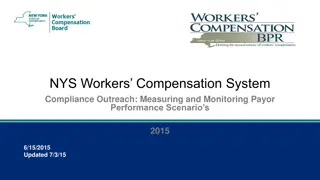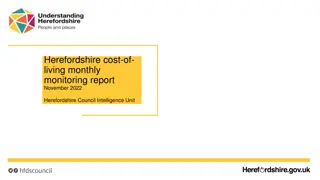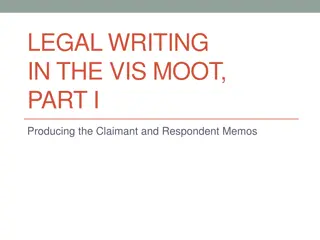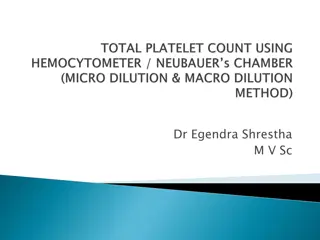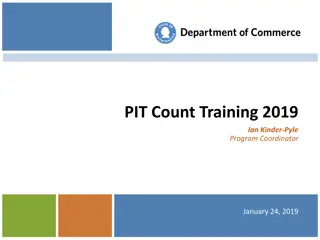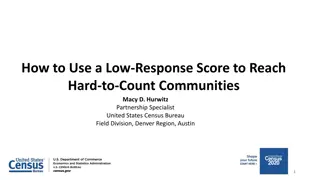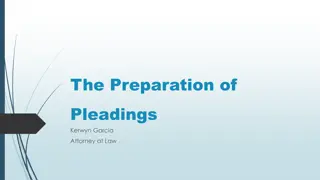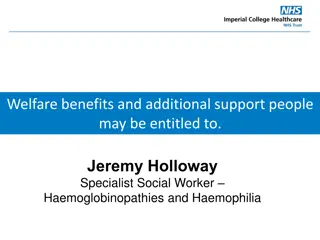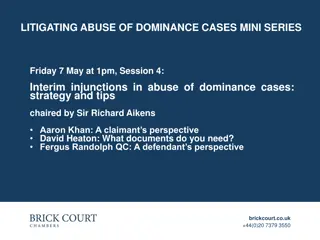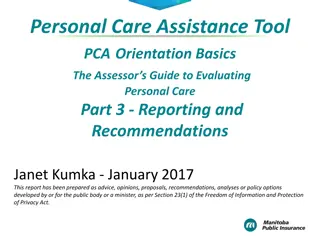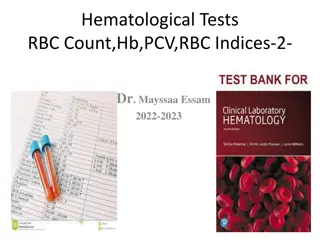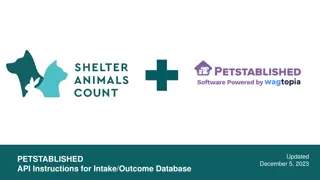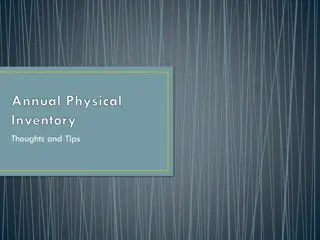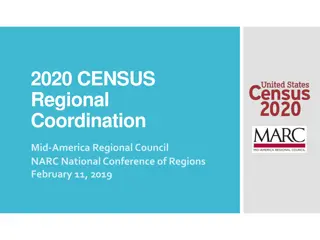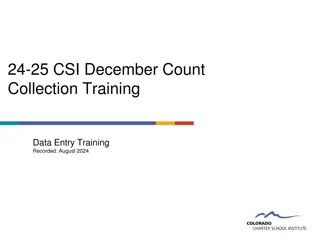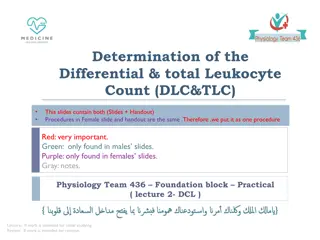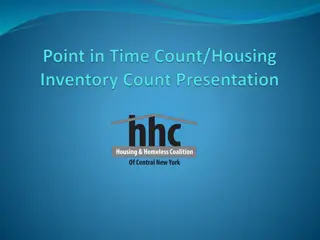Buckinghamshire's Claimant Count Analysis February 2021
This report provides a detailed analysis of Buckinghamshire's Claimant Count and Alternative Claimant Count for February 2021, based on data from the Department for Work and Pensions. It includes insights on claimant trends, rates, and comparisons to national and other regional statistics.
Download Presentation

Please find below an Image/Link to download the presentation.
The content on the website is provided AS IS for your information and personal use only. It may not be sold, licensed, or shared on other websites without obtaining consent from the author. Download presentation by click this link. If you encounter any issues during the download, it is possible that the publisher has removed the file from their server.
E N D
Presentation Transcript
Buckinghamshires Claimant Count Buckinghamshire s Claimant Count and Alternative Claimant Count and Alternative Claimant Count February 2021
Background Background This report provides a monthly summary of the number of Buckinghamshire residents claiming out-of-work related benefits (the Claimant Count and Alternative Claimant Count). Data is sourced from the Department for Work and Pensions (DWP) and can be found in varying configurations on the NOMIS, Stat-Explore and DWP websites. A full explanation of the two measures can be found in the Technical Appendix at the end of this report.
Headlines January 2021 In January 2021, 14,855 Buckinghamshire residents were claiming out-of-work related benefits (the Claimant Count) The number of claimants in Buckinghamshire fell by 15 between December 2020 and January 2021. There were 9,315 more claimants in Buckinghamshire in January 2021 than at the onset of the Covid-19 pandemic in March 2020. Buckinghamshire s Claimant Count rate (number of claimants as a proportion of working age residents) stands at 4.5%. This is up from 1.7% in March 2020 and is lower than the national average of 6.3%. When compared to other LEP areas, Buckinghamshire has the 7thlowest Claimant Count rate (up from having the second lowest rate in March and April 2020). Buckinghamshire s Claimant Count rate rose by 2.8 percentage points between March and January 2021, compared to the national increase of 3.3 percentage points. Within Buckinghamshire, the Claimant Count rate is highest in the Wycombe parliamentary constituency area (6.5%). The number of young people (aged 16-24) claiming has increased at a greater rate than other age groups. London has the largest increase in claimant count rate, with edge-of-London areas (particularly those close to Heathrow and Gatwick) tending to see higher than average increases in claimant count rate and higher than average levels of furloughing.
Table 1: Claimant Count Table 1: Claimant Count January 2021 January 2021 Area March 2020 January 2021 March - January 2021 Parliamentary constituency Number % Number % Change % point change Aylesbury 2,005 2.5 1,420 1.8 3,425 4.3 Beaconsfield 1,810 3.0 820 1.4 2,630 4.4 Buckingham 1,435 2.2 710 1.1 2,145 3.3 Chesham and Amersham Wycombe 1,410 2.5 750 1.4 2,160 3.9 2,655 3.9 1,840 2.6 4,495 6.5 Buckinghamshire 9,315 2.8 5,540 1.7 14,855 4.5 England 1,137,460 3.3 1,063,505 3.0 2,200,965 6.3 Source: DWP, via NOMIS
Chart 1: Claimant Count Chart 1: Claimant Count January 2021 January 2021 18,000 7.0 16,000 9,315 more claimants in January 2021 than in March 2020 6.0 14,000 5.0 12,000 4.0 10,000 8,000 3.0 6,000 2.0 4,000 1.0 2,000 0 0.0 Bucks - number Bucks % England % Source: DWP, via NOMIS
Chart 2: Buckinghamshires Claimant Count rate as a Chart 2: Buckinghamshire s Claimant Count rate as a percentage of the national Claimant Count rate percentage of the national Claimant Count rate 80% 70% 71% 60% 50% 43% 50% 40% 30% 20% 10% 0% Source: DWP, via NOMIS
Chart 3: Claimant Count rate % point increase (March to Chart 3: Claimant Count rate % point increase (March to January 2021) by Local Enterprise Partnership (LEP) area January 2021) by Local Enterprise Partnership (LEP) area 6.0 5.0 4.0 3.0 2.0 1.0 0.0 Derby, Derbyshire, Nottingham and The Marches Cumbria Black Country Greater Manchester Coast to Capital South East Midlands Leeds City Region Tees Valley Humber Heart of the South West Oxfordshire London Hertfordshire West of England Thames Valley Berkshire North East South East Cornwall and Isles of Scilly New Anglia Gloucestershire Dorset Leicester and Leicestershire Lancashire Stoke-on-Trent and Staffordshire Greater Cambridge and Greater Peterborough Swindon and Wiltshire Cheshire and Warrington York, North Yorkshire and East Riding Greater Birmingham and Solihull Liverpool City Region Coventry and Warwickshire Worcestershire Greater Lincolnshire Sheffield City Region Buckinghamshire Source: DWP, via NOMIS
Chart 4: Claimant Count rate by LEP area (January 2021) Chart 4: Claimant Count rate by LEP area (January 2021) 10.0 9.0 8.0 7.0 6.0 5.0 4.0 3.0 2.0 1.0 0.0 Solent Humber Cumbria North East London South East Gloucestershire Tees Valley Thames Valley Berkshire West of England Dorset Greater Manchester Greater Lincolnshire Hertfordshire Oxfordshire Sheffield City Region New Anglia Leeds City Region Cornwall and Isles of Scilly Coventry and Warwickshire Enterprise M3 Liverpool City Region Lancashire Black Country Worcestershire The Marches South East Midlands Coast to Capital Cheshire and Warrington Stoke-on-Trent and Staffordshire Leicester and Leicestershire Heart of the South West Greater Birmingham and Solihull Swindon and Wiltshire Greater Cambridge and Greater Peterborough York, North Yorkshire and East Riding Derby, Derbyshire, Nottingham and Nottinghamshire Buckinghamshire Source: DWP, via NOMIS
Table 2: Claimant Count by age for Buckinghamshire Table 2: Claimant Count by age for Buckinghamshire January 2021 January 2021 March - January % change % point change in share Age March 2020 January 2021 193% 1.5% Aged 16-24 885 16% 2,590 17% 170% 0.4% Aged 25-49 3,065 55% 8,285 56% Aged 50+ 150% -1.9% 1,590 29% 3,980 27% Column total 168% 0.0% 5,540 14,855 100% 100% Source: DWP, via NOMIS
Characteristics of claimants Characteristics of claimants Between March and January 2021, the Claimant Count rate in Buckinghamshire for men rose by 3.3 percentage points, compared to 2.4 percentage points for women. There is currently no local data on the number of people moving from employment to being economically inactive . Those doing so are more likely to be women than men. Young people have been worst affected age group to date. There was a 193% increase in the number of 16-24 year old claimants in Buckinghamshire between March and January 2021, compared to a 168% increase across all ages.
Chart 5: Alternative Claimant Count rate January Chart 5: Alternative Claimant Count rate January 2013 to November 2020 2013 to November 2020 Buckinghamshire Buckinghamshire 6.0% 5.0% 4.0% 3.0% 2.0% 1.0% 0.0% January 2015 January 2013 January 2014 January 2016 January 2017 January 2018 January 2019 January 2020 March 2013 March 2014 March 2015 March 2016 March 2017 March 2018 March 2019 March 2020 September 2013 September 2014 September 2015 September 2016 May 2017 September 2017 September 2018 September 2019 September 2020 May 2013 May 2014 May 2015 May 2016 May 2018 May 2019 July 2019 May 2020 July 2013 July 2014 July 2015 July 2016 July 2017 July 2018 July 2020 November 2013 November 2014 November 2015 November 2016 November 2017 November 2018 November 2019 November 2020 Source: DWP, via Stat-Xplore
Chart 6: Movement of people onto and off out of work benefits 7000 On flow 6000 Off flow 5000 4000 3000 2000 1000 0
Technical Appendix (1) Technical Appendix (1) Local-level unemployment data is not available from a single, timely, reliable source The Office for National Statistics (ONS) model local unemployment data using data from the Annual Population Survey and the Claimant Count (administrative data on those claiming out-of-work benefits) However, this is not available in real or near-time. Modelled unemployment data is released on a quarterly basis and covers the previous 12 months. So, for example, data released in October 2020, relates to the period July 2019 to June 2020 This is not therefore a useful source for the timely tracking of the impact of Covid-19 on the Buckinghamshire economy
Technical Appendix (2) Technical Appendix (2) The Claimant Count counts the number of people claiming Jobseeker's Allowance plus those who claim Universal Credit and are required to seek work and be available for work Whilst the Claimant Count is not a measure of unemployment, it is a useful proxy at the local level It is also a timely measure as data is released on a monthly basis. Data released in the second week in October 2020 for example, measures the number of claimants in the month to the second week in September 2020.
Technical Appendix (3) Technical Appendix (3) Some key things to bear in mind when interpreting this data Not all those who are unemployed claim benefits. This is largely due to people finding new work very quickly or having other sources of financial support at home. In normal (non-pandemic) times, it is estimated that around 55% of unemployed Buckinghamshire residents claim benefits and are therefore counted within the Claimant Count. A much lower proportion than the national average. Not all those counted within the Claimant Count are unemployed (some are working a low number of hours and / or are earning a low income). Due to the phased nature of recent changes to the benefits system, the Claimant Count cannot be used to measure historical trends. DWP therefore publish the Alternative Claimant Count, which models what the count would have been if Universal Credit had been in place since 2013. This data is less timely than the Claimant Count itself. For example, data for August 2020 was published in October 2020. And is published quarterly rather than monthly. Buckinghamshire LEP will therefore track and publish commentary on both the Claimant Count and the Alternative Claimant Count.
For further information on the information presented within this slide deck please contact James Moorhouse james.moorhouse@buckslep.co.uk Links below to the data tables used are below .. Claimant Count Alternative Claimant Count Further analysis of the impact of Covid-19 on the Buckinghamshire economy can be found on the Buckinghamshire LEP website. Evidence pack (updated monthly) is available here Evidence base produced to underpin the Buckinghamshire Recovery Strategy can be found here Follow @caroline_BLEP for tweets about the Buckinghamshire economy and labour market





